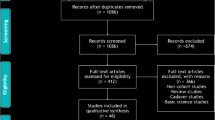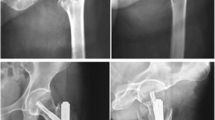Abstract
Eighty per cent of severe fractures occur in developing countries. Long bone fractures are treated by conservative methods if proper implants, intraoperative imaging and consistent electricity are lacking. These conservative treatments often result in lifelong disability. Locked intramedullary nailing is the standard of care for long bone fractures in the developed world. The Surgical Implant Generation Network (SIGN) has developed technology that allows all orthopaedic surgeons to treat fracture patients with locked intramedullary nailing without the need for image intensifiers, fracture tables or power reaming. Introduced in 1999, SIGN nails have been used to treat more than 100,000 patients in over 55 developing world countries. SIGN instruments and implants are donated to hospitals with the stipulation that they will be used to treat the poor at no cost. Studies have shown that patients return to function more rapidly, hospital stays are reduced, infection rates are low and clinical outcomes excellent. Cost-effectiveness analysis has confirmed that the system not only provides better outcomes, but does so at a reduced cost. SIGN continues to develop new technologies, in an effort to transform lives and bring equality in fracture care to the poorest of regions.





Similar content being viewed by others
References
Ameratunga S, Hijar M, Norton R (2006) Road-traffic injuries: confronting disparities to address a global-health problem. Lancet 367(9521):1533–1540
Beveridge M, Howard A (2004) The burden of orthopaedic disease in developing countries. J Bone Joint Surg Am 86:1819–1822
Bickler SW, Sanno-Duanda B (2000) Epidemiology of paediatric surgical admissions to a government referral hospital in the Gambia. Bull World Health Organ 78:1330–1336
Brooks PM (2006) The burden of musculoskeletal disease—a global perspective. Clin Rheumatol 25:778–781
Calafi LA, Antkowiak T, Curtiss S, Neu CP, Moehring DA (2010) A biomechanical comparison of the Surgical Implant Generation Network (SIGN) tibial nail with the standard hollow nail. Injury 41(7):753–757
Carr CR, Wingo CH (1973) Fractures of the femoral diaphysis. A retrospective study of the results and costs of treatment by intramedullary nailing and by traction and a spica cast. J Bone Joint Surg Am 55(4):690–700
Clough M, Zirkle LG, Schmitt RJ (2010) The role of SIGN in the development of a global orthopaedic trauma database. Clin Orthop Relat Res 468(10):2592–2597
Dormans JP, Fisher RC, Pill SG (2001) Orthopaedics in the developing world: present and future concerns. J Am Acad Orthop Surg 9:289–296
Downing ND, Griffin DR, Davis TR (1997) A comparison of the relative costs of cast treatment and intramedullary nailing for tibial diaphyseal fractures in the UK. Injury 28:373–375
Eriksen HM, Chugulu S, Kondo S, Lingaas E (2003) Surgical-site infections at Kilimanjaro Christian Medical Center. J Hosp Infect 55(1):14–20
Fakhry SM, Rutledge R, Dahners LE, Kessler D (1994) Incidence, management, and outcome of femoral shaft fracture: a statewide population-based analysis of 2805 adult patients in a rural state. J Trauma 37(2):255–260
Gendin O, Schultz R (2009) SIGN nailing of humeral fractures and nonunions. Tech Orthop 24(4):253–257
Gillquist J, Liliedahl SO, Rieger A (1971) Fracture of the femur diaphysis. Traction or nailing? Acta Chir Scand 137(6):515–520
Gosselin RA, Heitto M, Zirkle LG (2009) Cost-effectiveness of replacing skeletal traction by interlocked intramedullary nailing for femoral shaft fractures in a provincial trauma hospital in Cambodia. Int Orthop 33(5):1445–1448
Gosselin RA, Lavaly DJ (2007) Perkins traction for adult femoral shaft fractures: a report on 53 patients in Sierra Leone. Int Orthop 31(5):697–702
Gosselin RA, Spiegel DA, Coughlin R, Zirkle LG (2009) Injuries: the neglected burden in developing countries. Bull World Health Organ 87(4):246–246a
Hooper GJ, Keddell RG, Penny ID (1991) Conservative management or closed nailing for tibial shaft fractures. A randomised prospective trial. J Bone Joint Surg Br 73(1):83–85
Ikem IC, Ogunlusi JD, Ine HR (2007) Achieving interlocking nails without using an image intensifier. Int Orthop 31(4):487–490
Johnson KD, Johnston DW, Parker B (1984) Comminuted femoral shaft fractures: treatment by roller traction, cerclage wires and an intramedullary nail, or an interlocking intramedullary nail. J Bone Joint Surg Am 66(8):1222–1235
Krug EG, Sharma GK, Lozano R (2000) The global burden of injuries. Am J Public Health 90:523–526
Lefaivre KA, Guy P, Chan H, Blachut PA (2008) Long-term follow-up of tibial shaft fractures treated with intramedullary nailing. J Orthop Trauma 22(8):525–529
Lopez AD, Begg S, Bos E (2006) Demographic and epidemiological characteristics of major regions, 1990–2001. In: Lopez AD, Mathers CD, Ezzati M, Jamison DT, Murray CJL, eds. Global burden of disease and risk factors. The International Bank for Reconstruction and Development/The World Bank, Washington, DC; Oxford University Press, New York, 1:17–44
Lopez AD, Mathers CD, Ezzati M, Jamison DT, Murray CJL (2006) Measuring the global burden of disease and risk factors, 1990–2001. In: Lopez AD, Mathers CD, Ezzati M, Jamison DT, Murray CJL, eds. Global burden of disease and risk factors. The International Bank for Reconstruction and Development/The World Bank, Washington, DC; Oxford University Press, New York, 1:1–14
Lwin T (2009) Tibio-talo-calcaneal fusion using SIGN IM nail. Tech Orthop 24(4):277–278
Mathers CD, Loncar D (2006) Projections of global mortality and burden of disease from 2002 to 2030. PLoS Med 3:e442
Mathers CD, Lopez AD, Murray CJL (2006) The burden of disease and mortality by condition: data, methods, and results for 2001. In: Lopez AD, Mathers CD, Ezzati M, Jamison DT, Murray CJL, eds. Global burden of disease and risk factors. The International Bank for Reconstruction and Development/The World Bank, Washington, DC; Oxford University Press, New York, 1:45–240
Miller CW, Anderson L, Grossman J, Grant G (1978) Comparison of three treatments for fractures of the diaphysis of the femur. Surg Gynecol Obstet 146(4):572–576
Mock CN, Adzotor KE, Conklin E, Denno DM, Jurkovich GJ (1993) Trauma outcomes in the rural developing world: comparison with an urban level I trauma center. J Trauma 35:518–523
Mock CN, Boland E, Acheampong F, Adjei S (2003) Long-term injury related disability in Ghana. Disabil Rehabil 25:732–741
Mock C, Cherian MN (2008) The global burden of musculoskeletal injuries: challenges and solutions. Clin Orthop Relat Res 466:2306–2316
Nantulya VM, Reich MR (2002) The neglected epidemic: road traffic injuries in developing countries. BMJ 324:1139–1141
Ogunlosi JD, St. Rose RS, Davids T (2010) Interlocking nailing without imaging: the challenges of locating distal slots and how to overcome them in SIGN intramedullary nailing. Int Orthop 34(6):891–895
Peden M, McGee K, Sharma G (2002) The injury chart book: a graphical overview of the global burden of injuries. World Health Organization, Geneva
Reggiori A, Ravera M, Cocozza E, Andreata M, Mukasa F (1996) Randomized study of antibiotic prophylaxis for general and gynaecological surgery from a single centre in rural Africa. Br J Surg 83(3):356–359
Sekimpi P, Okike K, Zirkle L, Jawa A (2011) Femoral fracture fixation in developing countries: an evaluation of the Surgical Implant Generation Network (SIGN) intramedullary nail. J Bone Joint Surg Am 93(19):1811–1818
Subak LL, Caughey AB (2000) Measuring cost-effectiveness of surgical procedures. Clin Obstet Gynecol 43(3):551–560
Thomas TL, Meggitt BF (1981) A comparative study of methods for treating fractures of the distal half of the femur. J Bone Joint Surg Br 63-B:3–6
Toivanen JA, Hirvonen M, Auvinen O et al (2000) Cast treatment and intramedullary locking nail for simple and spiral wedge tibial shaft fractures—a cost-benefit analysis. Ann Chir Gynaecol 89(2):138–142
Webb LX, Gristina AG, Fowler HL (1988) Unstable femoral shaft fractures: a comparison of interlocking nailing versus traction and casting methods. J Orthop Trauma 2(1):10–12
World Health Organization (2010) World Health Statistics. Available via: http://www.who.int/whosia/whostat/EN_WHS10_Full.pdf. Accessed 28 Apr 2012
World Health Organization (2004) World report on road traffic injury prevention. World Health Organization, Geneva
Young S, Lie SA, Hallan G, Zirkle LG, Engesaeter LB, Havelin LI (2011) Low infection rates after 34,361 intramedullary nail operations in 55 low- and middle-income countries: validation of the Surgical Implant Generation Network (SIGN) online surgical database. Acta Orthop 82(6):737–743
Author information
Authors and Affiliations
Corresponding author
Additional information
Dr. Zirkle is the founder and current president of SIGN Fracture Care International.
Rights and permissions
About this article
Cite this article
Phillips, J., Zirkle, L.G. & Gosselin, R.A. Achieving locked intramedullary fixation of long bone fractures: technology for the developing world. International Orthopaedics (SICOT) 36, 2007–2013 (2012). https://doi.org/10.1007/s00264-012-1625-3
Received:
Accepted:
Published:
Issue Date:
DOI: https://doi.org/10.1007/s00264-012-1625-3




